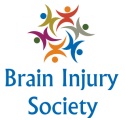
Have you ever considered what life is like for the millions of people who currently live with a traumatic brain injury? There is so much that one cannot ever imagine in these situations unless you are personally affected by it. Unfortunately, this is the everyday reality for many. Yet, sometimes doctors do not even realize this. This is partly why Traumatic Brain Injury is called the Silent Epidemic.
No MRI, No TBI
Millions of Americans are affected and suffering in silence; some of which are not even recognized as being real instances of the effects of brain injury. This is because these injuries do not always show up in MRI’s. As a matter of fact, 85 percent of mild TBI’s don’t show up at all. Yet their symptoms are very present, and affect everyday life for otherwise “normal” people. This social health issue is one of the most prevalent but is largely ignored. Athletes are especially susceptible to brain injury, and other related disorders.
Brain Function
Losing brain function is an essential part of the body for effective living. Apart from making judgments, the neural function of the brain is also responsible for a number of major motor functions of the body. We can think of our body as being completely governed by our 3 pound human brain. Everything we are able to accomplish is largely dependent on our brain’s health. This organ is incredibly sensitive. This is why receiving repetitive injury to the brain can lead to serious medical conditions, one which is starting to become more pronounced is Chronic Traumatic Encephalopathy.
Chronic Traumatic Encephalopathy
Better known as CTE, this is a disorder common among athletes who experience brain trauma that leads to concussions. This brain injury has appearing frequently in the boxing and football industry. This condition has stirred up quite a bit of controversy within the NFL. Many individuals feel that the NFL should have taken more precautions as well as owned up to the responsibility of caring for players who have suffered such injuries. It was only when Dr. Bennet Omalu, a forensic pathologist, shed light on these findings that the NFL made strides to provide more in depth health regulations for their players. Some of these improvements included psychiatric evaluations after injury and improved concussions guidelines. The criticism is that these regulations should have been put in place much sooner, as the NFL knew about these dangers to their players earlier but took no steps to protect them.
Serious and Deadly Effects
Chronic Traumatic Encephalopathy is a progressive and degenerative disorder with severe symptoms. Some of these can include memory loss, changes in personality, forgetfulness, confusion, full- blown dementia, impaired judgement, impulsiveness, aggression, depression, mood disorders, and most seriously suicidal tendencies. Symptoms do not necessarily start right after the traumatic event to the brain. They can begin decades later, so this condition can be difficult to diagnose.
It is essential that we protect our loved ones from these types of injuries. However, this awareness should not only apply to professional athletes, our children might also be participating in sports that could be harmful or dangerous. Some of these include cheerleading, football, gymnastics, and other hobbies that can place them at risk for serious injury. Always be sure that if you are an athlete, you are taking the proper measures to stay safe and healthy.
